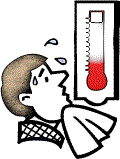

[Scientific American, September 24, 2008]
The world's most outspoken climatologist argues that today's carbon dioxide levels are already dangerously too high. What can we do if he is right?
By Michael D. Lemonick
![]()

"The basic proposition behind the science of climate change is so firmly rooted in the laws of physics that no reasonable person can dispute it. All other things being equal, adding carbon dioxide (CO2) to the atmosphere—by, for example, burning millions of tons of oil, coal and natural gas—will make it warm up. That, as the Nobel Prize–winning chemist Svante Arrhenius first explained in 1896, is because CO2 is relatively transparent to visible light from the sun, which heats the planet during the day. But it is relatively opaque to infrared, which the earth tries to reradiate back into space at night."
- "Oceans absorb vast amounts of heat, slowing the warm-up of the atmosphere, yet they also absorb excess CO2.
- "Vegetation soaks up CO2 as well but eventually rereleases the gas as plants rot or burn—or, in a much longer-term scenario—drift to the bottom of the ocean to form sedimentary rock such as limestone.
- "Warmer temperatures drive more evaporation from the oceans; the water vapor itself is a heat-trapping gas, whereas the clouds it forms block some of the sun’s warming rays."
- carbon dioxide has a long residence time.
- a convergence of common property resources.
- the impact on biological diversity.
- the most recent findings.
"Global warming driven climate change is a test of our industrial capacity to efficiently adjust effectively and with agility to curbing pollution and health risks."
J. V. Siry
Archer | Christianson | Gelbspan | James Hansen, 04 : Hansen 06 | McKibben| Schmidt | Weart | Wigley



